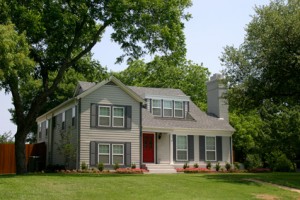Predictions are comforting. They are the reason we check the weather before a vacation and why we research sporting events before we place our bets. Even if the predictions are wrong, we like to be prepared for what’s next – or at least think we are.
Housing trends are the same. After three tumultuous years, the American population needs to know what is coming in their economy – the good, the bad, and the carefully optimistic. With the effect of the 2010 home buying tax credit done, what will happen to housing trends in 2011? Seven predictions have been espoused and generally agreed upon as truths by most in the housing market. Take note!
Small, urban houses are in
The interest in small homes in walkable, urban centers will continue to grow in 2011. While this will do a lot for revitalizing urban cores, it will be difficult for large suburban home sellers to see results. Home value statistics for people who own small, urban houses will be up.
Green is still growing
The green machine is in full swing in 2011 across all building sectors: industrial, retail, office, multi-family homes, and single-family homes. According to Builder Online, green buildings tend to retain tenants and do not need to jack up lease rates. High retention matched with lower operating costs result in what is ultimately a more stable environment.
Look to see “greening” reach further into the residential sectors, as well as in regions that were previously slow to respond to green building. Building or buying green homes will affect home value statistics.
Home prices will continue to drop
Housingwire.com reported back in November that Standard & Poor’s predicts a 7 to 10 percent drop in housing prices over the course of 2011, despite the glimmer of an upswing earlier in 2010. This prediction is largely due to the huge number of foreclosures that are expected to hit as the new year gets underway. Flooding the market with empty homes will affect home value statistics.
More foreclosures ahead
The Board of Governors of the Federal Reserve System did not have good news to share during Sarah Bloom Raskin’s speech in Boston last November. She announced that close to 2.25 million foreclosures will take place in 2011, with another 2 million to follow in 2012.
The one bright spot: as banks continue a gradual foreclosure process, home prices will likely remain stable and home value statistics will level out.
Mortgages will remain very low
Homebuyers will continue to enjoy extremely low mortgage rates throughout 2011, even though there will be a slight increase compared to 2010. Mortgage Bankers Associates predict that even by the end of the year, the average mortgage will only increase to about 5.1 percent.
The Federal Reserve is encouraging these low rates by buying $600 billion of Treasuries in hope that it will give incentive for potential homebuyers to make a purchase and boost the economy.
Housing works hand in hand with employment
It makes sense: the more people who have jobs, the more people who buy homes. America’s unemployment is still at an all-time high, which constantly pushes against any efforts for an improved housing market. Until unemployment drops below the predicted 9 percent for 2011, significant steps to a recovering housing market are out of the question.
Cash matters most
In the aftermath of 2008 and 2009 and with millions of foreclosures looming, loans still make banks and sellers uncomfortable. Investors are seeing more success with lower, all-cash bids on homes and properties than higher bids that may involve a loan.
Homebuyers competing for a property will need to work to make their offer as attractive as possible, which may mean putting down more money than the asking price and offering a sizable down payment.
2011 to Repeat 2010?
In the end, 2011’s housing market is shaping up to be very similar to that of 2010.
Are these predictions in line with your own? Where do they differ?

